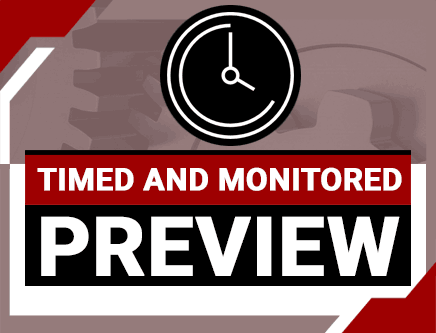Renewable Energy: Where are We Going to Get It? (Ohio T&M)
Credit: 4 PDH
Subject Matter Expert: Jayachandra N. Sakamuri, Electrical Engineer
In Renewable Energy: Where are We Going to Get It?, you'll learn ...
- Techniques for using solar energy to generate electrical power
- Advantages and disadvantages of the various solar techniques
- Techniques for using wind energy to generate electrical power
- Advantages and disadvantages of using wind to generate electricity
Overview

To meet the Ohio Board's intent that online courses be "paced" by the provider, a timer will be used to record your study time. You will be unable to access the quiz until the required study time of 200 minutes has been met.
Credit: 4 PDH
Length: 66 pages
Energy consumption in the United States and the rest of the world is increasing at what may be an unsustainable rate. In the United States, as of 2009, 69 % of the electrical energy produced was by burning coal, natural gas, and petroleum. Nuclear energy accounted for another 20 %. These non renewable energy sources will some day either be depleted, or become too difficult to extract from the earth. Clearly something needs to be done to find ways to produce energy that do not use the non renewable natural resources.
This course is mainly concerned with finding new ways to generate electrical power without using non renewable natural resources. Solar, wind, conventional hydro, geothermal, hydrokinetic, and the use of renewable biomass are all considered. Since our way of life is at stake, it is imperative that the known ways of generating renewable energy be developed and new ideas be generated. Working together, we can do it. Too often we have said that renewable energy generation will not occur in my back yard. Well, it's no longer my back yard, but our back yard. Whether it's a windmill, a geothermal plant or an array of solar cells, we might need them in our back yards. And, for all that we know, someone might figure out how to use the earth's magnetic field or its movement through space to generate electrical energy. The human spirit will always find a way.
Specific Knowledge or Skill Obtained
This course teaches the following specific knowledge and skills:
- Techniques for using solar energy to generate electrical power
- Advantages and disadvantages of the various solar techniques
- Techniques for using wind energy to generate electrical power
- Advantages and disadvantages of using wind to generate electricity
- Techniques for using falling and moving water to generate electricity
- Advantages and disadvantages of using falling and moving water to generate electricity
- How geothermal energy electrical generation works, and its advantages and disadvantages
- The enormity of the electrical energy problem in this country and the world
Certificate of Completion
You will be able to immediately print a certificate of completion after passing a multiple-choice quiz consisting of 40 questions. PDH credits are not awarded until the course is completed and quiz is passed.
| This course is applicable to professional engineers in: | ||
| Alabama (P.E.) | Alaska (P.E.) | Arkansas (P.E.) |
| Delaware (P.E.) | District of Columbia (P.E.) | Florida (P.E. Area of Practice) |
| Georgia (P.E.) | Idaho (P.E.) | Illinois (P.E.) |
| Illinois (S.E.) | Indiana (P.E.) | Iowa (P.E.) |
| Kansas (P.E.) | Kentucky (P.E.) | Louisiana (P.E.) |
| Maine (P.E.) | Maryland (P.E.) | Michigan (P.E.) |
| Minnesota (P.E.) | Mississippi (P.E.) | Missouri (P.E.) |
| Montana (P.E.) | Nebraska (P.E.) | Nevada (P.E.) |
| New Hampshire (P.E.) | New Jersey (P.E.) | New Mexico (P.E.) |
| New York (P.E.) | North Carolina (P.E.) | North Dakota (P.E.) |
| Ohio (P.E. Timed & Monitored) | Oklahoma (P.E.) | Oregon (P.E.) |
| Pennsylvania (P.E.) | South Carolina (P.E.) | South Dakota (P.E.) |
| Tennessee (P.E.) | Texas (P.E.) | Utah (P.E.) |
| Vermont (P.E.) | Virginia (P.E.) | West Virginia (P.E.) |
| Wisconsin (P.E.) | Wyoming (P.E.) | |


 Live support chat
Live support chat



